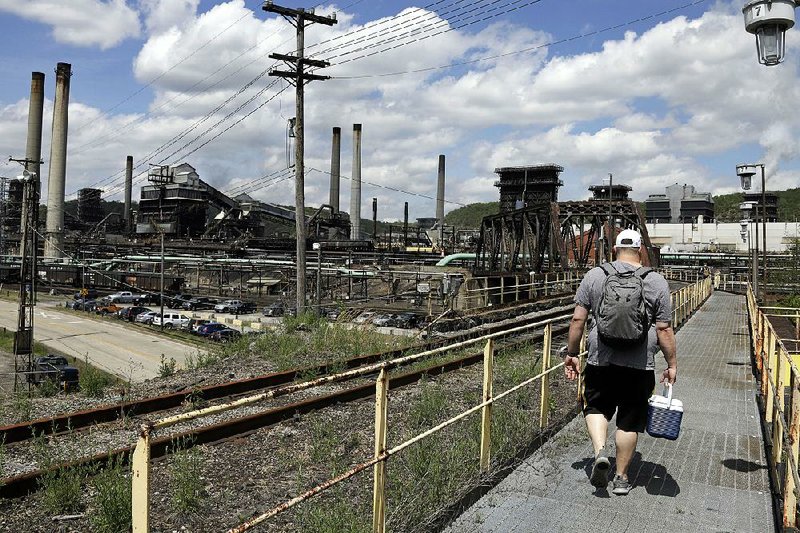WASHINGTON -- U.S. industrial production fell in April, dragged by a big drop in factory output as production of autos and auto parts continued to slide.
Industrial output -- reflecting total production at factories, utilities and mines -- dropped 0.5% in April after a 0.2% March gain, the Federal Reserve reported Wednesday. Industrial production fell 0.5% in February.
Manufacturing output fell 0.5%, led by a 2.6% decline in motor vehicles and parts, which has fallen in three of the past four months.
Production at the nation's utilities fell a sharp 3.5%. Production at mines, a sector that also covers oil and gas drilling, rose 1.6%.
Machinery output shrank the most since 2014, business equipment fell the most since 2013 and output of consumer goods decreased the most since January, the Fed said.
Manufacturing has struggled over the past year, reflecting weakness in auto sales and the global economy and rising trade tensions.
Industry analysts blame the decline in auto sales in the first quarter on rising vehicle prices, competition from an abundant supply of late-model used vehicles and relatively high interest rates.
In addition to falling auto sales, manufacturers have been battered by trade tensions stemming from President Donald Trump's get-tough trade policies, which are aimed at narrowing America's perennial trade deficits. He says they have cost America millions of manufacturing jobs.
In the past week, the United States and China, which had already imposed punitive tariffs on $350 billion worth of each other's goods, moved to impose further penalties after negotiations on a new trade deal between the world's two biggest economies reached an impasse.
The United States is seeking a new trade agreement to combat Beijing's aggressive push to challenge U.S. technological dominance. The increased tariffs have rattled financial markets, although Trump has said he still hopes to achieve a trade deal in coming weeks.
The data add to other signs of sluggishness in the sector, including recent declines in regional Fed factory gauges from Philadelphia to Dallas and Richmond. Still, a New York Fed report released earlier Wednesday showed activity in that region rebounded in May to the strongest level since November.
Capacity utilization, measuring the amount of a plant that is in use, decreased to a 14-month low of 77.9% from 78.5%.
Information for this article was contributed by Martin Crutsinger of The Associated Press and by Katia Dmitrieva of Bloomberg News.
Business on 05/16/2019

